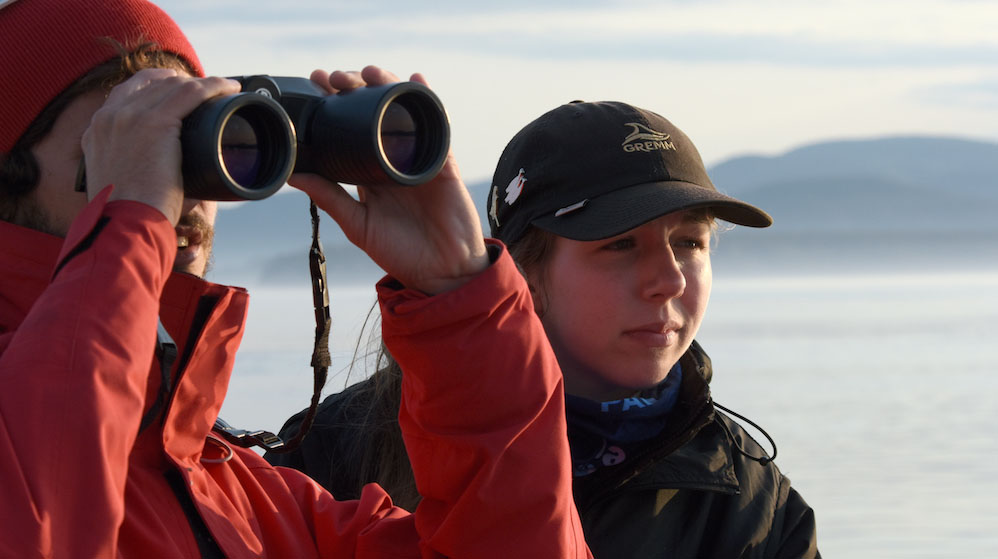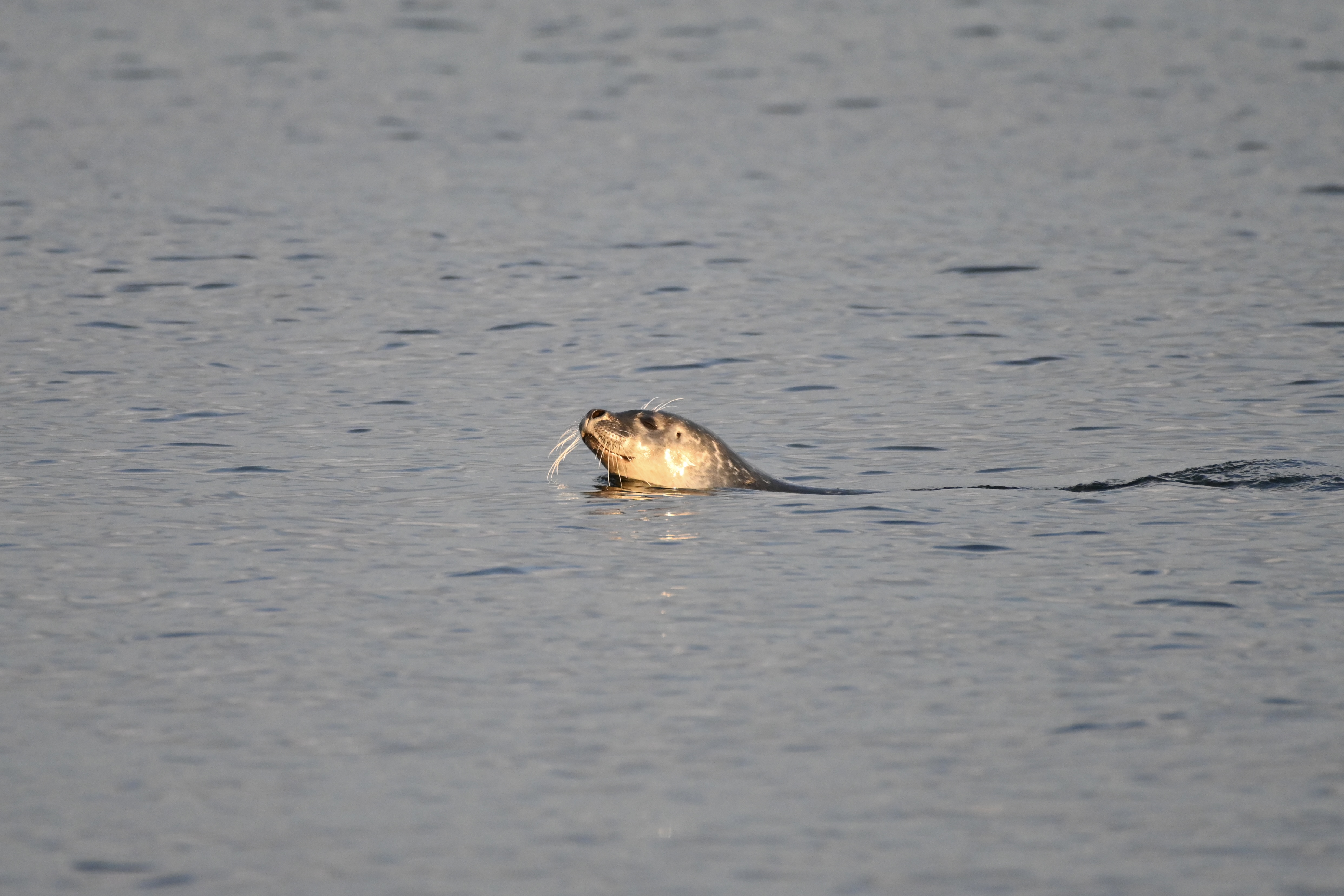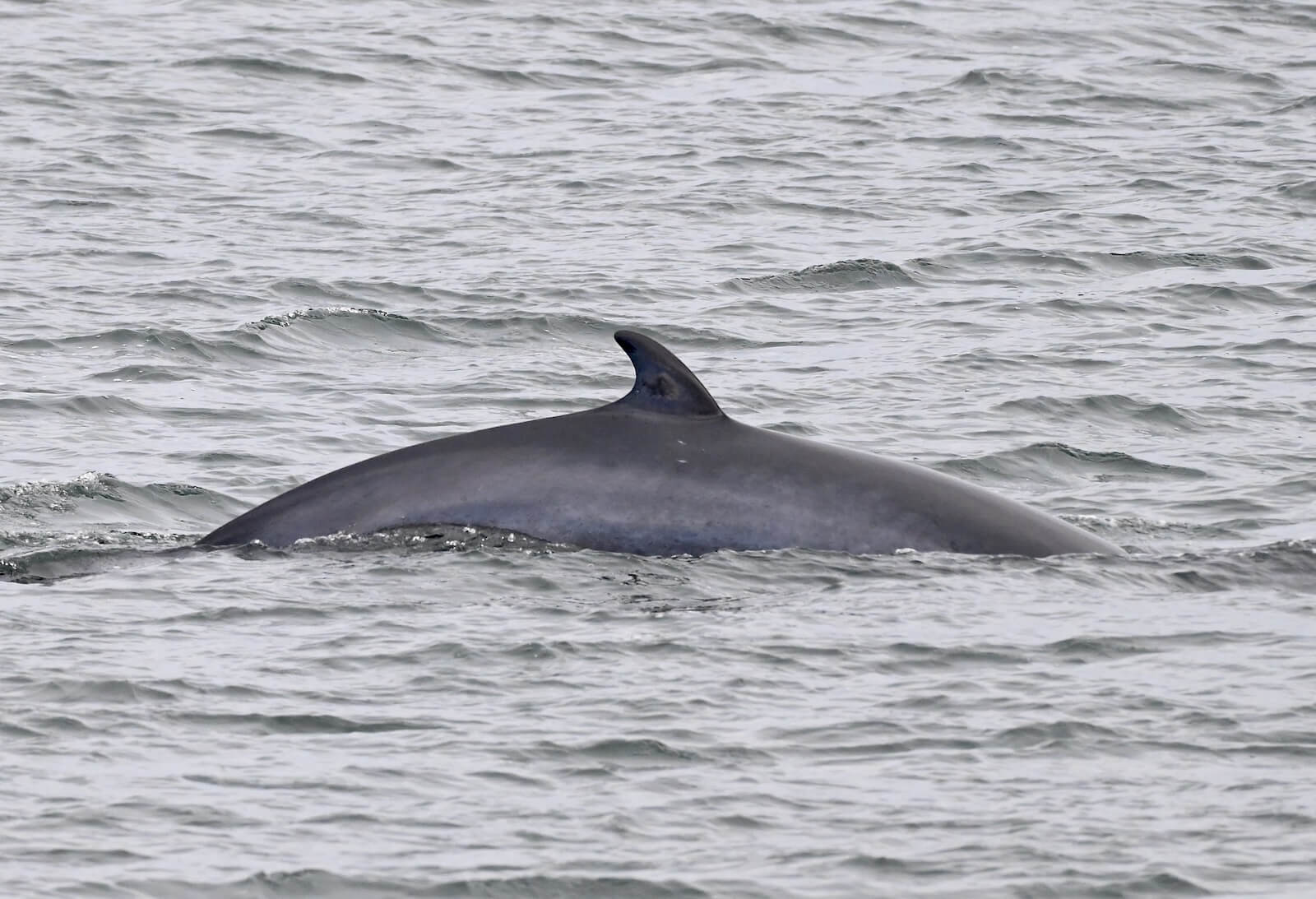A black “iris” shape on the right lobe and a white “seven” in the centre of the tail; cat eyes right in the middle of the tail; and a “ghost” on the tip of the right lobe: these are the respective faces of Irisept (Cocotte), Siam and Gaspar (also called Boom Boom River (BBR) when she is seen in the Gaspé). The unique patterns they show on the undersides of their tails are like their faces. These traits – visible when the animals dive – are often the source of inspiration for the humpbacks’ names. The research team at the Mingan Island Cetacean Study (MICS) named Whip based on the mark on the left lobe of its tail. All these animals are in Gaspésie this week, at the mouth of Gaspé Bay. The excitement was uncontainable on July 7 in a whale-watching boat. “When we move around, we think we are seeing the same individuals, but in fact, they are all different!” exclaimed a naturalist. Humpbacks Bolt, Leprechaun and Tingley were also seen. Tingley, a very large female, was accompanied by a calf. Another humpback was sighted by the MICS team near the Mingan Islands. It was the first of the season for that region!





